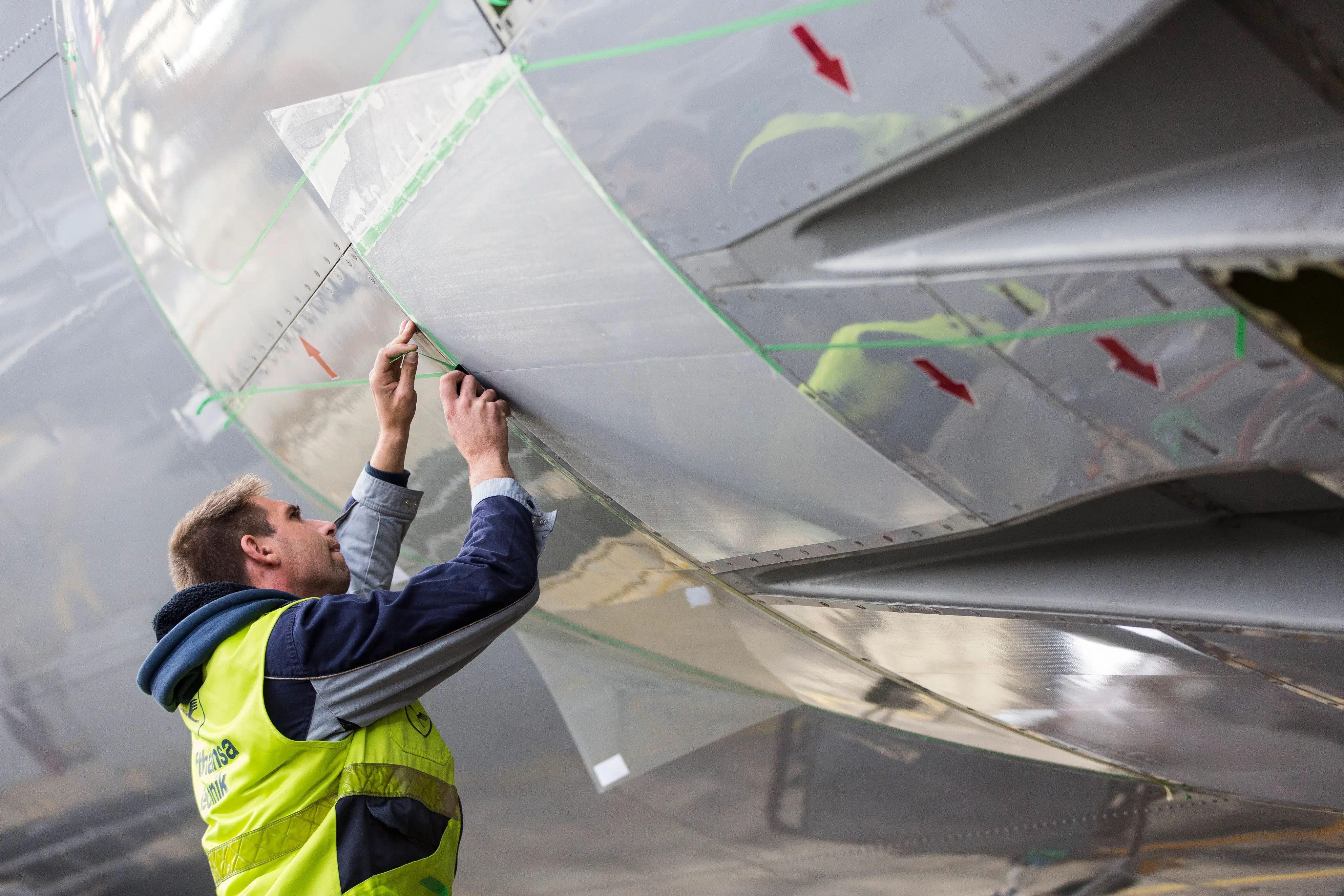Summary Photo: via Florian Klebl via Wikimedia . Airlines are using new technology like AeroSHARK film to gain small savings that add up to significant emissions reductions over time. The AeroSHARK technology, imitating sharkskin, can cut CO2 emissions by reducing friction of aircraft passing through air.
Austrian Airlines is investing in AeroSHARK to reach CO2 reduction goals, with impressive fuel and emissions savings on long-haul flights. In the battle against climate change and to reach net zero emissions by 2050, airlines worldwide are looking for the 1% gains already available. Switching to new-generation aircraft and engines is a fast way to gain double-digit leaps in cutting emissions, but getting hold of new aircraft is not as easy as it once was.

Smoothing out the bumps Keen Simple Flying readers would have already heard of AeroSHARK technology, a riblet film that reduces frictional resistance during flight, allowing for a smoother passage through the air. That smoother passage reduces fuel consumption and cuts CO2 emissions in much the same way that aerodynamic bikes move through the air quicker to reduce drag. The miracle microstructures could be the solution to achieving the industry’s challenging environmental goal.
Lufthansa Technik , one of the world's leading aircraft maintenance repair and overhaul (MRO) specialists, is at the forefront of this sharkskin technology. Today, Lufthansa Technik (LHT) announced it is fitting AeroSHARK surface film to a new aircraft type, the Boeing 777-200ER, which will join the 747-400, 777-300ER and 777F aircraft types already benefitting from the revolutionary technology. From winter 2024, four of the six Boeing 777-200ERs in Austrian Airlines' fleet will be sequentially modified with AeroSHARK film.
In today's announcement, LHT said that the modification will produce total savings of approximately 2,650 metric tons (2,920 US tons) of fuel and more than 8,300 metric tons (9,150 US tons) of CO2 over a four-year service life, which corresponds to around 46 flights from Vienna to New York. A total of 17 Lufthansa Group aircraft have already been fitted with AeroSHARK, and with proven success, that number is steadily increasing. The modified aircraft include one Lufthansa Airlines Boeing 747-400 , twelve SWISS 777-300ERs and four 777Fs operated by Lufthansa Cargo.
Every 1% helps Austrian Airlines Chief Operating Officer Francesco Sciortino said that even though the Boeing 777-200ERs are in their final years of service, the airline is making this investment "to get one step closer to our CO2 reductions targets." He added: "We take our responsibility seriously and take every possible step to reduce CO2 emissions within our flight operations. At one percent, the sharkskin's efficiency potential may not sound like much, but in total it will save thousands of tons of CO2 per year on long-haul flights.
" SWISS saved more than 2000 tonnes of kerosene with the new technology in the last year alone. When you run an airline that operates around 70 aircraft to more than 120 destinations, every 1% cut in emissions is meaningful. Austrian Airlines (Austrian) has committed to halving its net CO2 emissions by 2030 and flying CO2 neutral by 2050, and given the age of its fleet, it needs to use the best available technology to reach those targets.
According to fleet data from ch-aviation , Austrian has 70 aircraft with an average age of 16.5 years. The youngest are Boeing 787-9 Dreamliners, and the oldest are Airbus A321-100s.
The fleet comprises Airbus A320-200s, A320neos, A321-100s and A321-200s, while Boeing aircraft include 767-300ERs, 777-200ERs and 787-9 Dreamliners. Austrian also operates Embraer 190-200LRs and has two ATR72-600s on wet lease. We'd love to see you on Instagram - follow us here ! AeroSHARK was jointly developed by LHT and BASF and is a surface technology consisting of riblets about 50 micrometers (0.
00197 inches) thick. It is another example of a product adopted from nature, as it imitates the unique structure of sharkskin. The process uses around 830 square meters (993 square yards) of AeroSHARK film applied to the fuselage and nacelles of the 777-200ER to produce around a 1% fuel reduction per flight.
.



















